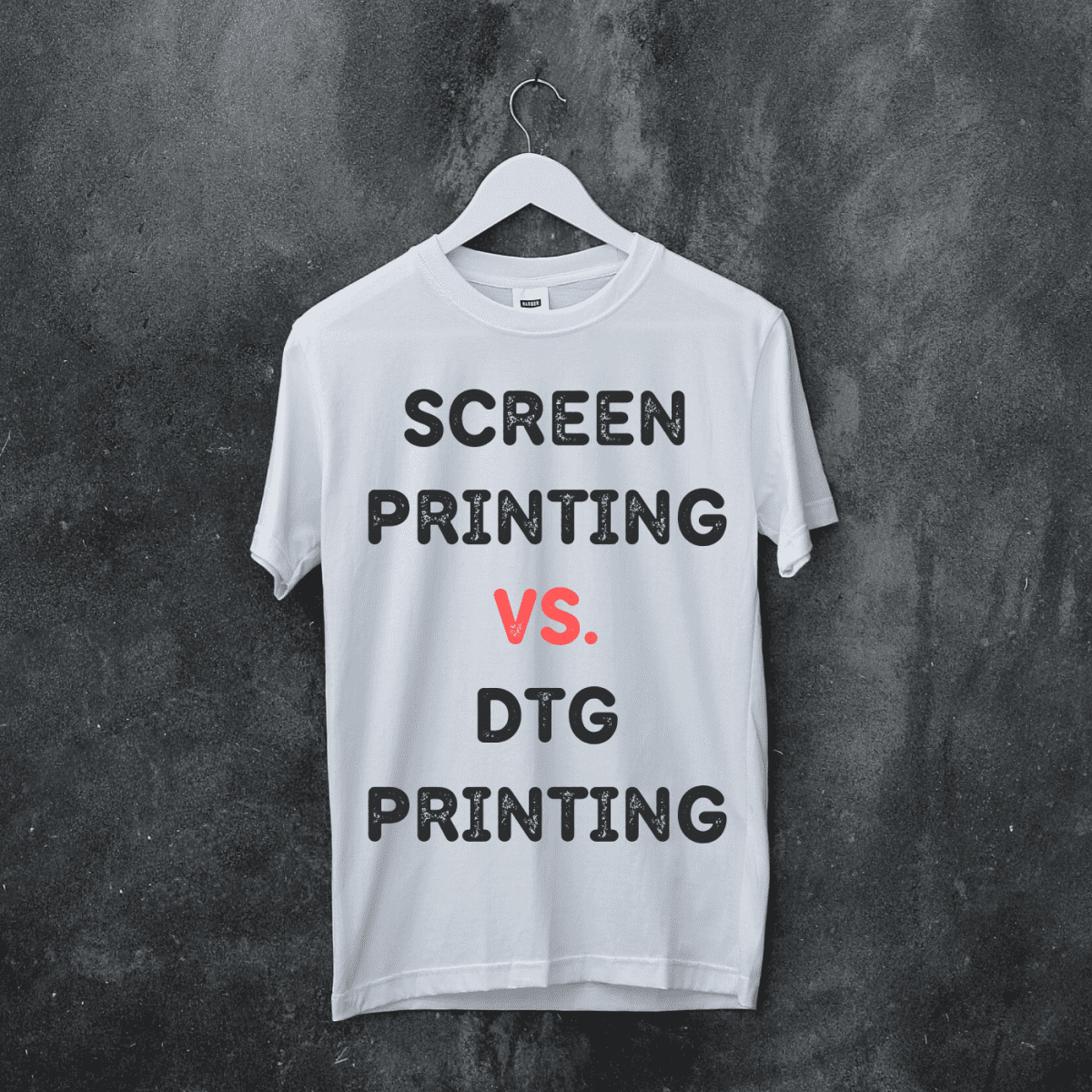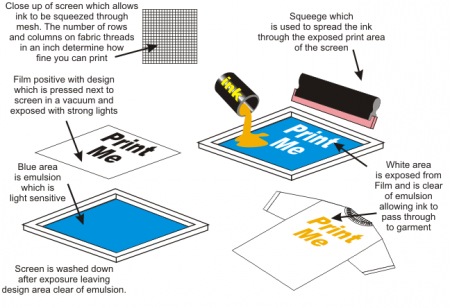Examine This Report on Tx Tees
Examine This Report on Tx Tees
Blog Article
The 5-Minute Rule for Tx Tees
Table of Contents6 Simple Techniques For Tx TeesFacts About Tx Tees Uncovered9 Easy Facts About Tx Tees ExplainedTx Tees for BeginnersThe 45-Second Trick For Tx TeesTx Tees - TruthsUnknown Facts About Tx Tees
That brings your overall to roughly $1,900 gross and delivery. Accumulate other costs, like the variety of energies it requires to run the shop and the expense of ink and emulsion per style. custom cap printing. Take the print below. This is a one-color image, so the price of ink per t-shirt is approximately 20 cents.The emulsion ought to just be a couple of cents since you 'd only need to coat one display for this work. Generally, printers try to make up to 45% revenue on a print task.

With DTF, you can print a handful of t-shirts, or just one. Make use of the very same calculator as the section above to compute just how much profit you 'd use DTF transfers. Compare the prices and revenues to whichever method talks finest to your setup and procedure. Both screen printing and DTF have their niches on the planet.
Some Known Facts About Tx Tees.
The most effective means to understand? Ask about and see what print shops like yours are doing. custom t-shirt design. Try both out and see which you like better
When you're selecting what sort of printing approach to make use of for printing your artwork styles on your garments, it's vital that you recognize the differences between these two methods so you can make best use of results while minimizing costs. Screen printing is the most frequently made use of strategy for publishing designs on textiles.
DTG printing is also referred to as place or straight to garment printing because it prints only what is needed rather than making a display as screen printers do. https://tx-abilene.cataloxy.us/firms/txtees.com.htm. Display printing functions by screen filler squeegee display printing ink screen mesh display, then moving the picture to garment using warmth and/or pressure
The DTG printer uses unique dye-sublimation inks that are applied into a pre-designed photo by an electronic printing system. The inks enter into the textile, allowing for vivid colors and exceptional information. It's also referred to as area or direct to garment printing since it publishes only what is required as opposed to making a display as screen printers do.
The 8-Minute Rule for Tx Tees
Initially, it's much quicker - you can print a fullcolor picture in mins, instead of hours for display printing. Second, there's no established time or costs included - you can print any kind of style you like, without needing to develop a display initially. Third, there's no waste - because screen printers display print one design each time, they need to evaluate each color independently.
The paper is really expensive and can just be used once. Once it's published on, it has actually to be disposed of. - The first acquisition rate is reduced than the ahead of time financial investment of DTG printers- You can print multi-color styles one display at once rather than needing to print each color separately like DTG printing.

Some Known Details About Tx Tees
Rather of using screen mesh as display printers do, color sublimation printers use laser technology to transfer your pictures onto garments or paper. A warmth process transfers the dye from its solid-state straight right into the gas stage which in turn fuses it onto material substratums when they are swiftly heated to high temperature levels under high pressure.
Sublimation printing is environment-friendly. It uses less water than screenprinting, and due to the fact that it doesn't include the use of unsafe solvents, it's risk-free for all sorts of clothing. The color sublimation inks are additionally odor-free when cured, unlike screen printers that utilize unsafe chemicals throughout the display printing process that leave behind an go to my blog unpleasant odor.
They likewise conserve cash on pricey equipment like exposure devices considering that color sublimation printers don't need a UV direct exposure unit or a flash remedy stove that is generally utilized in display printing (custom monograming). What is straight to garment printing (DTG Printing)? DTG printing is a digital screenprinting procedure that prints directly onto material utilizing specialized inkjet printers
What Does Tx Tees Mean?
DTG printing provides many advantages over standard screenprinting, including the ability to publish photographic high quality photos, better color vibrancy, and the capacity to publish styles on darker materials. DTG printers work by warming the textile ink till it develops into a gas. The gas after that permeates the textile, bonding with the fibers to produce a long-term print.

Screen printers just prepare their display then start printing up until they lack item or ink.- There is a variety of skilled display printers around the globe, which can be helpful for newbies. - It's a slower process - display printers typically have to wait on the ink to completely dry prior to they can publish the following color- Screen printers need hands-on labor, so there's a higher understanding curve and it takes longer to generate a high-quality design- Screen printing isn't as exact as DTG printing, so you may get some "bleeding" of shades from one component of the picture onto an additional otherwise done effectively.
Tx Tees Can Be Fun For Anyone
Nonetheless, instead of making use of display mesh as screen printers do, color sublimation printers use laser technology to move your images onto garments or paper. A warm procedure transfers the color from its solid-state directly into the gas stage which subsequently integrates it onto material substratums when they are rapidly heated to high temperature levels under high pressure.
Sublimation printing is eco-friendly. It uses less water than screenprinting, and since it does not involve using hazardous solvents, it's risk-free for all sorts of apparel. The color sublimation inks are additionally odor-free when treated, unlike screen printers that make use of damaging chemicals throughout the display printing process that leave behind an unpleasant smell.
They additionally save cash on pricey tools like direct exposure units since dye sublimation printers don't need a UV exposure unit or a flash remedy stove that is normally used in display printing. What is straight to garment printing (DTG Printing)? DTG printing is a digital screenprinting process that publishes straight onto textile using specialized inkjet printers.
Some Of Tx Tees
DTG printing provides several advantages over standard screenprinting, including the capacity to publish photographic high quality photos, higher shade vibrancy, and the ability to print designs on darker fabrics. DTG printers function by heating up the textile ink up until it develops into a gas. The gas then penetrates the material, bonding with the fibers to create an irreversible print.
Report this page